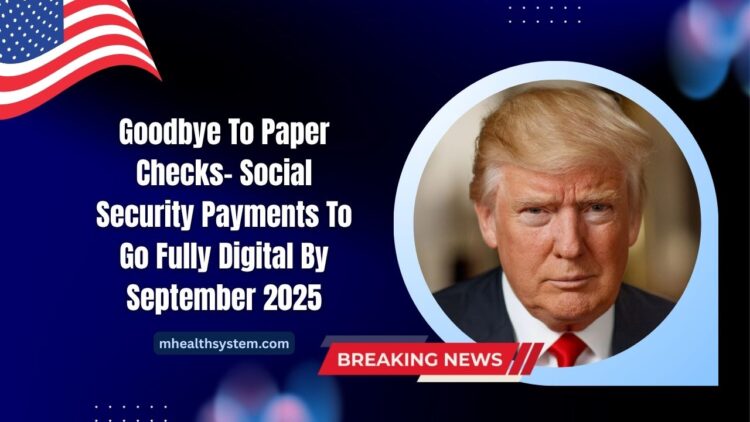As the digital era continues to reshape government processes, the Social Security Administration (SSA) is preparing for a historic shift in how Social Security benefits are distributed.
In a move to modernize the federal payment system, President Donald Trump signed an executive order confirming that all Social Security payments will transition from paper checks to digital formats by September 30, 2025.
Let’s explore the details, who is impacted, and how the SSA plans to manage the transition.
Why Is the Change Happening?
The new directive, titled “Modernizing Payments To and From America’s Bank Account,” aims to enhance payment security, reduce fraud, and increase efficiency.
The U.S. Treasury has found that paper checks are 16 times more likely to be lost or stolen compared to electronic transactions. This shift will significantly cut down administrative costs and delays tied to mailed payments.
Currently, the majority of beneficiaries already receive their monthly Social Security payments via direct deposit or Direct Express debit cards, but a sizable number still rely on paper checks.
Who Will Be Most Affected?
According to recent estimates, approximately 500,000 Americans still receive paper checks for their benefits. This group includes:
- Seniors without access to modern banking
- Disabled individuals unfamiliar with digital tools
- Residents in rural areas with limited internet or banking services
The Federal Deposit Insurance Corporation (FDIC) revealed in 2023 that 4.2% of U.S. households—or 5.6 million households—are unbanked, and thus more vulnerable to disruptions during the shift to digital-only payments.
New Payment Methods Available
To facilitate the transition, the SSA will offer multiple digital payment options, including:
| Payment Method | Details |
|---|---|
| Direct Deposit | Funds transferred directly into a bank or credit union account |
| Direct Express Card | A government-provided prepaid debit card |
| Digital Wallets | Integration with platforms like PayPal or mobile payment apps (pending rollout) |
| Real-Time Payments | Instant electronic transfers via banking networks |
These modern alternatives are designed to be secure, traceable, and more accessible over time.
Support for Vulnerable Groups
Understanding the digital divide, the SSA is launching education and outreach programs in coordination with:
- Local banks and credit unions
- Nonprofit financial counseling services
- Community technology assistance groups
These initiatives aim to help beneficiaries:
- Set up bank accounts or debit cards
- Understand how to use digital tools safely
- Gain confidence in managing electronic transactions
Special accommodations and exceptions may be made in unique hardship cases to ensure no individual is left behind.
Timeline and What You Need to Do
The transition will be completed by September 30, 2025. If you are still receiving paper checks, you will need to select a digital payment option by that date to avoid disruption in benefits.
The SSA recommends acting before March 2025 to ensure a smooth transition and avoid delays during peak conversion periods.
The end of paper checks for Social Security payments marks a major step toward a faster, safer, and more efficient benefit system in the United States.
While it offers numerous advantages, the SSA acknowledges the challenges for some individuals and is actively working to ensure a smooth and inclusive transition.
If you still rely on traditional checks, now is the time to act, learn your options, and secure your new digital payment method well before the September 2025 deadline. The future of Social Security is digital—and preparation is key.
FAQs
Do I have to open a bank account to receive benefits now?
No, you can also opt for the Direct Express prepaid debit card if you don’t have or want a bank account.
Will I be notified before my checks stop arriving?
Yes, the SSA will issue multiple notices leading up to the transition deadline, including mailers and phone outreach for affected recipients.
What if I don’t have internet access?
Local SSA offices and partner organizations will provide in-person assistance to help you set up and manage your digital payment method.




